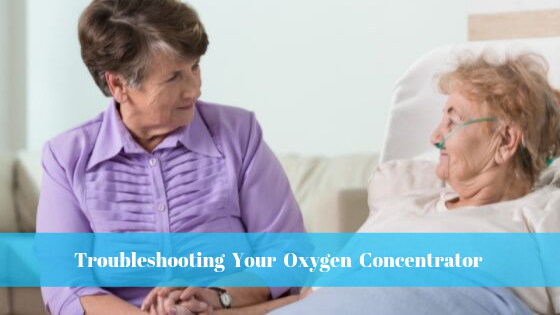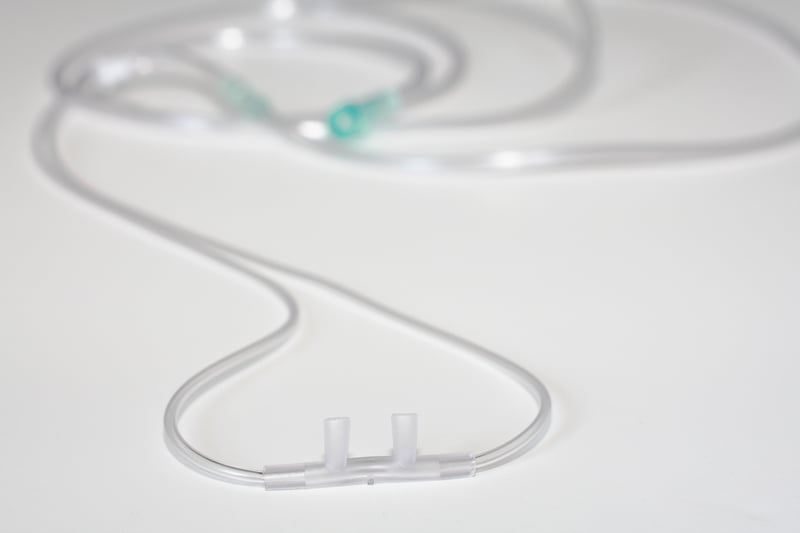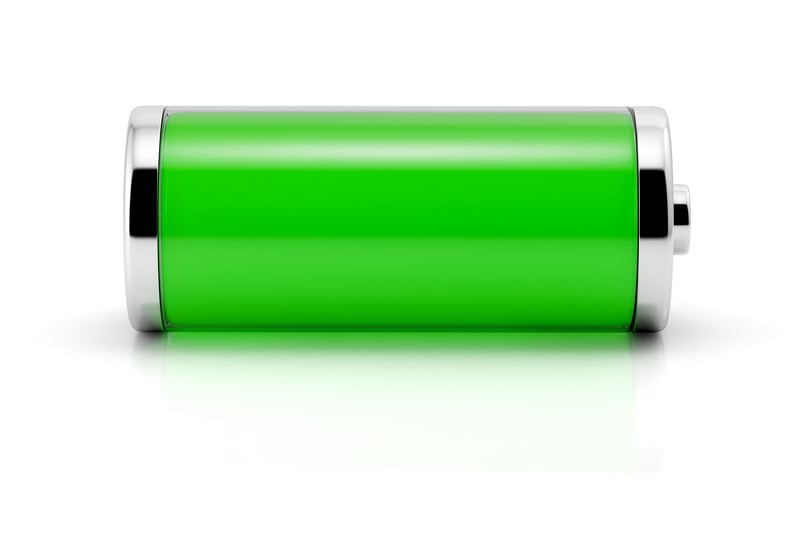
Oxygen concentrators are one of the most reliable and effective treatments for COPD, pneumonia, cystic fibrosis and a host of other medical conditions. But like any other machine on the market, oxygen concentrators and portable oxygen concentrators can malfunction. The great news is that there is a host of helpful information out there to get your device working for you again.
If you try fixing your own device to no avail, you can always ask a loved one for a helping hand. There are also online forums where you can speak with other people undergoing oxygen therapy or you can always consult the user manual for detailed information on your product.
However, it can still be confusing trying to keep up with all the changes going on in the oxygen therapy field so we’re going to do our best to provide you with a comprehensive guide on fixing some of the most common malfunctions with modern oxygen concentrators.
If you purchase a new device or a new concentrator releases, be sure to check back here as we’ll update it with the most current and relevant information you need to know.
{{cta('fa8abc2a-1e88-4fa3-82fd-1cb5b9ed43b2','justifycenter')}}
Common Oxygen Concentrator Errors
Probably the most important thing to note when troubleshooting an oxygen concentrator is that it’s not the same as an oxygen tank. Whereas oxygen tanks are purely mechanical, an oxygen concentrator has electrical components that need to work in order for oxygen to come out of the device.
What this means is that if your device suddenly stops working, it could be due to a temporary glitch in the system that can be fixed easily and without a significant amount of technical knowledge of the device. Let’s take a look at some of the most common errors and how to fix them easily.
No Breath Error
If you’re using a full battery but end up getting a “no breath” error on your oxygen concentrator control panel, there are several things that may be causing this. The “no breath” error typically occurs when your device hasn’t detected a breath for a certain period of time, so if you’ve been using it, you should check to make sure there are no kinks in the cannula tubing and that the cannula is connected to the concentrator.

This error may also result if your cannula isn’t positioned properly in your nose. Although you can position the nasal cannula prongs up or down in the nose, they should be facing down in order to have the best results and to ensure that oxygen is sent directly into the nasal canal.
Oxygen Error
Since oxygen concentrators don’t have an oxygen tank on them, they draw ambient air and turn it into pure oxygen. This happens in a five step process:
- Taking in ambient air
- Compressing the oxygen
- Removing oxygen from the air
- Adjusting the flow rate
- Delivering purified air
If your device runs into an issue with any step in this process, you may be given an oxygen error indicating that oxygen output is low or isn’t working as it should. Although this could be a complex issue with the device, you should try turning it off and on again to see if the error message goes away.

 Battery Won’t Charge
Battery Won’t Charge
If your battery won’t hold a charge or your oxygen concentrator won’t turn on, you should make sure the power cable is plugged in correctly. If it is, you should use another electrical device to try the outlet and make sure it’s working. And if it does, there may be a problem with your charging cable or the battery in your device. You can also try taking the battery pack off of your concentrator and putting it back on and checking to ensure it isn’t loose.

Oxygen Purity Error
Another important function of your oxygen concentrator is to purify the air that you breathe through your cannula. Breathing clean air is crucial to preventing COPD exacerbations but if your device becomes clogged with airborne particles or the sieve bed quits working, you may get a purity error. Sieve beds generally last a year or so but, amount of use, proper storage and humidity present can reduce its life expectancy.
System Too Hot or Cold
Like all electronic devices, oxygen concentrators need to be kept at a reasonable temperature in order to prevent overheating or becoming too cold for use. If not, you may get an error on your control panel or an audible notification or the device may simply shut off. Make sure that all air intakes and outputs are free of obstruction and try switching out your battery if one gets too hot.


Troubleshooting Checklist
Before you contact your equipment provider, there are a few things you can try, no matter what error or symptom you’re experiencing. Follow this checklist to see if it fixes your device.
Perform a hard reset
Turn the oxygen concentrator off and unplug it from the wall. Remove the battery pack and leave it for 30 minutes. After the allotted time, plug it back into the wall, turn it on, and put the battery pack in after 10 minutes.
- Check all vents and your cannula to ensure they aren’t obstructed
- Ensure your battery isn’t loose or try replacing it with a backup
- Check for physical damage on the system or the battery
- Research any error message in your device manual
- Take note of the error code and frequency of the issue you’re experiencing
If you should need to contact the equipment provider for assistance, the error code or symbol will help them identify what is causing the issue.
General Operating Guidelines
In order to prevent errors in the future, you should follow your oxygen concentrator’s best practices. Although every oxygen concentrator or portable oxygen concentrator is different, there are some general rules of thumb that you should follow. Be sure to consult your user manual for more specific information about maintaining your device and contact your equipment provider if you have any further questions.
Storing Your Concentrator
Oxygen concentrators should be stored in an environment that is not too cold, too hot, or too humid. Concentrators that are stored in these environments for a prolonged period of time may experience damage to their internal components and may not work.
{{cta('b59df0c1-c4de-47a8-8e1c-0d33d4b414aa','justifycenter')}}
Don’t Smoke Around It
It’s generally safe to assume that any airborne pollutants will be bad for your oxygen concentrator and this is especially true when it comes to smoking. If smoke enters the vents on the device it could damage internal components and cause your sieve beds to wear down more quickly. If you’re setting the device on the floor, make sure it’s in a clean area without a lot of dust or dirt.

Troubleshoot Before Leaving Your Home
If you have a portable oxygen concentrator, it’s generally best to troubleshoot any issues before leaving the home. Although your device may still be working after an error message appears, it may stop working when you’re out and about and need it most.
Replace Your Filter
Some concentrators have a gross particle filter that catches a lot of airborne particles like dust and dirt. It’s important that you replace this filter after a year or so in order to prevent breathing in impure air and keep your device running smoothly. You should also clean it every month with a gentle household detergent and water.

Replace Your Nasal Cannula
After a month or two of use, your cannula may become worn, kinked, and otherwise inefficient. Not only can a worn cannula lead to errors on your oxygen concentrator but you may not be receiving as much oxygen that you should if there is a leak or the tube is bent. You should inspect and clean your nasal cannula tubing regularly to prevent this.

Fully Charge and Deplete Your Batteries
Your oxygen concentrator batteries will last longer if you charge them up fully and then deplete them fully at least once a month. Just like with your phone or laptop, you should try to avoid charging your oxygen concentrator batteries multiple times a day. And if you have an extra battery pack, be sure to swap it out with your main one every once in a while so it gets some use.

Ask For Help
Above all, you should never wait to get your questions answered about your oxygen concentrator. Although they’re usually very reliable, getting your device fixed sooner rather than later will ensure it lasts as long as possible. Keep your equipment suppliers phone number on hand to ensure you always have someone to go to if your device isn’t working.
Conclusion
Home and portable oxygen concentrators have come a long way in a short time. While this means you have access to a high-tech oxygen therapy device wherever you need it, you may find it difficult to get the information you need to maintain your device and fix errors.
If the issue you’re experiencing wasn’t discussed here be sure to consult your device manual or contact your equipment provider. If you have a caregiver, he/she will help you maintain and clean your oxygen concentrator and troubleshoot any errors. Online COPD forums are also a great place to speak with other people who may be experiencing the same issues with their device.

